-
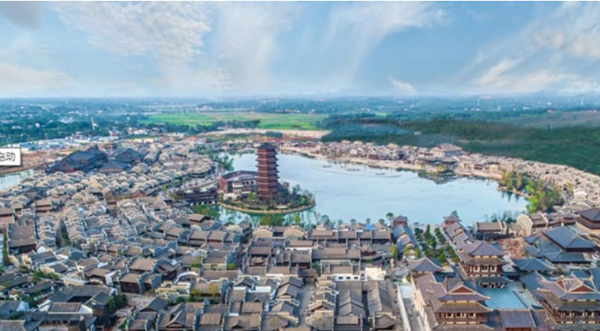
Tongguan Kiln Site is located in the area from Tongguan Town to Shizhu Lake in Wangcheng District of Changsha City, 27 kilometers away from Changsha City in the south, connected with the famous Tongguan Pottery City in the north, and facing the Xiangjiang River in the east. Changsha Tongguan Kiln is the birthplace of Tang Dynasty colored porcelain in China.
Changsha & Zhuzhou & Xiangtan
2023-09-07 17:38
View:2244
-
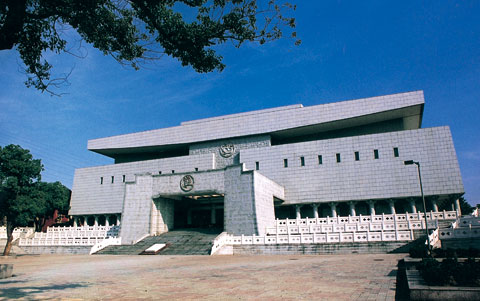
Hunan Provincial Museum, the largest museum of history and art in Hunan Province, was set up in the early 1950s. It lies in the Kaifu District of Changsha with an area of 51,000 square meters. The museum boasts abundant collections that feature cultural relics excavated from the marvelous Mawangdui Han Tombs, including the bronze wares of the Shang and Zhou Dynasties and the Kingdom of Chu, pottery and porcelain works in the past dynasties, calligraphy works and paintings, as well as modern cultural relics. The new exhibition building of Hunan Provincial Museum is simple in form but marked for its magnificent grandeur. The multi-functional and well equipped building shows six permanent exhibitions and many temporary exhibitions.The Exhibition of Han Tombs at MawangduiThe excavation from 1972 to 1974 of three tombs of the Western Han dynasty at Mawangdui in Changsha marks one of the major archaeological discoveries in the twentieth century. Over 3,000 cultural relics and a well-preserved female corpse were unearthed.Among the uncovered relics are bright-colored lacquer wares representing the highest level of workmanship at that time, fine silks amazingly showing accomplished weaving technique, silk paintings with romantic themes of the Kingdom of Heaven, the craving for eternity, and silk inscriptions demonstrating knowledge and wisdom of the ancient people. The well-preserved female corpse is even a miracle in human antisepsis.The Exhibition of Shang and Zhou Bronzes found in Hunan ProvinceThe earliest bronzes that have been found in Hunan Province were excavated from several Shang Dynasty sites (over 3,500 years ago) in Tonggushan of Yueyang City and Zaoshi of Shimen County. The Museum has a fairly large collection of bronzes of the Shang and Zhou Dynasties. The Exhibition of Shang and Zhou Bronzes found in Hunan Province displays 72 carefully selected bronzes and 11 jade objects unearthed together with the bronzes. This exhibition reflects the sequence of development of bronze culture in Hunan Province, and offers knowledge of the bronze Nao (a kind of musical instrument) and animal-shaped bronze utensils, and enriches the connotation of China\'s bronze culture.The Exhibition of Ceramics from Famous Kilns in Hunan ProvinceThe ceramics industry in Hunan Province has obtained a unique position after a long history of development. The ten-thousand-year old pottery shards unearthed at Yuchanyan in Dao County are among the earliest ever-discovered in China. More than 400 kilns chronologically ranging from the Eastern Han Dynasty (206BC -23AD) to the Qing Dynasty (1636-1912) have been discovered in Hunan Province. The brilliantly colorful ceramic art of Hunan has added a bright vista to ancient ceramics in China.The Exhibition of Calligraphies in the Ming and Qing DynastiesCalligraphy in China is an old and unique traditional art. Chinese calligraphy is based on Chinese written characters and gradually develops into a most concentrated aesthetic form of art that provides an understanding of the Chinese culture.There are a large collection of calligraphy works of the Ming and Qing Dynasties (1368-1912) in the museum, especially the works of celebrities from Hunan Province, which show the elegant and distinct demeanor of Hunan calligraphy. The displayed collection of the Ming and Qing Dynasties epitomizes the continuation, innovation and development of calligraphy in Hunan Province along with the other parts of China.The Exhibition of Paintings Created in the Ming and Qing DynastiesThe history of Chinese painting art runs a long course from a remote source with its unique national style and profound cultural information. Based on the development of the painting art in the Tang and the Song Dynasties (618AD-1279AD), the painting art of the Ming and the Qing Dynasties has a tendency of individuation, and, therefore, various schools of paintings with different styles have appeared. There is a large collection of paintings of the Ming and the Qing Dynasties in this exhibition. Among them, there are works of painters that have never been shown anywhere else in the country, which show the basic development of the painting art and the artistic style of Ming and Qing Dynasties.The Exhibition of Ten New Major Archaeological Discoveries in Hunan ProvinceThe Exhibition of Ten New Major Archaeological Discoveries in Hunan Province with 133 artifacts shows the ten new great archaeological discoveries in Hunan Province over the past ten years, among which, eight have been included in Annual Ten New Major Archaeological Discoveries in China and three have been included in the Hundred Greatest Archaeological Discoveries of the Twentieth Century in China. Furthermore, the excavation of an ancient city site from the Warring States (475BC-221BC) to the Qin(221BC-206BC)and Han (206BC-220AD) Dynasties in Liye of Longshan County has been regarded as one of the greatest archaeological discoveries of the twenty-first century in China. This exhibition shows rich and various aspects of artifacts, including quantity, variety, form, cultural meaning, historical and scientific value and so on.There are also many national treasures displayed here, which include Coffin with Painted Design on Black Lacquer Coating,which, though has been buried for more than two thousand years, still shines in dazzling colors; the Tang Dynasty Copy of \"Lan Ting Xu\" (the Brown Silk Paper Scroll), which enables us to know the style of early Tang Dynasty calligraphy while appreciating the artistic beauty of Wang Xizhi\'s calligraphy; the T-shaped Painting on Silk; the Gauze Gown as well as the Square Bronze Ding with Human Mask Design and Inscriptions of da he.With a concentration of treasures of cultural relics from the land of Hunan Province, Hunan Provincial Museum paints a panoramic historical picture of Hunan civilization. Serving as an important window to interpret the history and nuances of Hunan culture, it attracts every year hundreds of thousands of visitors from China and abroad.Admission: free (not open on Monday)Opening hours: 8:00am-17:45Tel: (86)731-4535566Transport: Bus Nos.112 and 136
HOT Changsha & Zhuzhou & Xiangtan
2022-08-06 11:53
View:5803
-
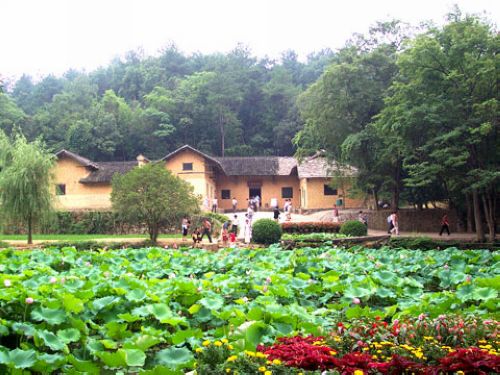
Shaoshan, one of the four major revolutionary memorial lands of China, has been well known in the world because of Mao Zedong, a great leader of China. With fascinating scenery, Shaoshan Scenic and Historic Interest Area is mainly composed of Former Residence of Mao Zedong, Shaofeng Peak, Dishui Cave, Qingxi and Heishizhai scenic areas.Former Residence of Mao ZedongThe Former Residence of Mao Zedong is one of the national AAAA scenic spots. The residence named Shangwuchang, is located in a valley which is well landscaped. The house that faces the south was built with adobe and grey tile- roofed. It is of a half-timbered structure, and used to be a normal farmer house in the south of China. In the front there are rice fields and pools, in the back there is a hill with diverse trees, on the left there is a vegetable field and on the right there are vegetable fields, rice fields and grain-sunning ground. It covers a land area of 566.39 square meters, with 20 rooms. The east part of the residence with 14 rooms belonged to Mao\\\'s family, whilst the west part with 5 rooms belonged to his neighbors, and the living room was shared by the two families. Mao Zedong was born here on Dec. 26, 1893. He spent his childhood and boyhood here. In the fall of 1910 he left this village for study. After he joined the revolution, Mao Zedong returned ShaoShan for 5 times, for the purpose of revolution, inspecting or visiting his villagers. In 1966 he came here for the last time and spent the time in Dishui Cave (Dripping Water Cave). This residence was destructed in 1929 by Kuomintang, after 1950 its original appearance was recovered. In April, 1961, this former residence was announced by the State Council as a Key National Historical Reservation Unit, and then in 1982 its name was changed to Former Residence from Original Residence. Now all the rooms have been renovated to be their original appearance and layouts: their bedrooms (Mao, his parents and his two brothers\\\'), the living room, kitchen and other rooms. The historical relics include: the furniture in Mao\\\'s bedroom and his parents\\\' bedroom (bed, wardrobe, desks, stool and chair), the jar and cupboard in the kitchen, stone grinder, man-driven irrigation tool and the harrow in the Farm Implements Room, the rice pestle and man-driven blower for rice in the Pestle Room.
HOT Changsha & Zhuzhou & Xiangtan
2022-05-24 17:17
View:5336
-
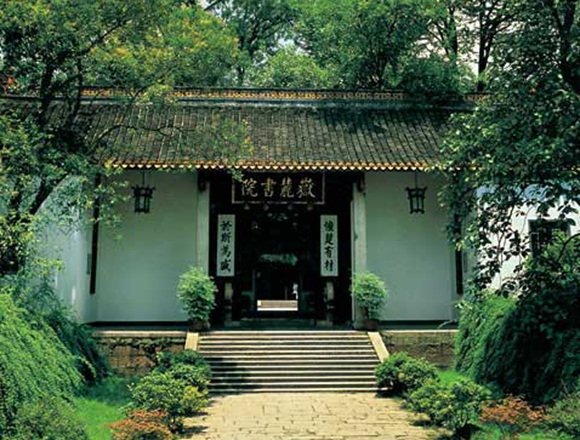
Yuelu Academy, one of the four greatest academies in ancient China, is situated at the foot of Yuelu Mountain. Yuelu Academy began to run more than 1,000 years ago. It was operated by monks in its earlier period. In 976 AD, Zhu Dong, a prefect of Tanzhou(ancient name of Changsha), took over the administrative power and handed it to the Confucian scholars. Henceforth, for more than one thousand years, Yuelu Academy has been a divine spot for Confucianism education and a center of culture and literature. Yuelu Academy mainly comprises the Main Gate, the Lecture Hall, Lushan Temple Tablet, Yushu Library, Wenchang Pavilion, Six Gentleman Hall, Ten-sacrificial-vessels Hall, Grand Sunlight Platform, the Banxue Building, the Hexi Platform, etc. The words Yue Lu Shu Yuan (Yuelu Academy) on the horizontal board of the Main Gate were inscriptions of Zhenzong, an Emperor of the Song Dynasty (960AD-1279AD). From then on, Yuelu Academy became well-known all around the country and students came to study in an endless stream. On the door posts of the gate are couplets which read Wei Chu You Cai, Yu Si Wei Sheng (the Kingdom of Chu, the unique home of talents; the Academy of Yuelu, the very cradle of all). This couplet originates from Chinese classics and it is very appropriate given the fact that talents have been brought up continuously by the Academy since its establishment. The Lecture Hall, also called a \\\"Hall of Loyalty, Filial Piety, Integraty and Chastity\\\", is a core building of the Academy. Located at the heart of the Academy, the Lecture Hall is the most important place for teaching and momentous ceremony. In the 6th year of Qiandao Reign (1168 A), Southern Song Dynasty, the famous idealist Zhang Shi and Zhu Xi made a joint lecture here, which was the first joint lecture in the Confucian academies of China. There are also many valuable culture relics of steles in the Lecture Hall. On the inner walls of the hall are engraved four big Chinese Characters- Zhong, Xiao, Lian, Jie (loyalty, piety, honesty and integrity) which were written by the great scholar Zhu Xi. Others such as \\\"Uniform and stand as a mark of respect\\\" written and set by one master of the Qing Dynasty, Ouyang Zhenghuan and the stele \\\"School Regulations\\\" written by master Wang Wenqing of Qing Dynasty are all the important historical materials for the study of the education in China\\\'s Confucian academies. They still have their own enlightening meaning to us nowadays. During a history of more than one thousand years, there have been countless talented students learning here. Especially in the late 19th century and 20th century, it witnessed a great number of patriotic thinkers, politicians, militarists, industrialists and diplomats. In 1903, the academy was converted into an advanced school and was officially renamed Hunan University in 1926. Today, Yuelu Academy, which has undergone restorations, has been listed as a key historical site under the state protection. It still shoulders the responsibility of conducting academic researches and training professionals. Transport: Bus Nos. 202, 913, 902, 305, Lishan special line, Tour line 1st. It takes just about 30 minutes ride to the railway station, and one hour to the airportAdmission (for reference): RMB 30 yuan/adultTel:(86)731-88822316Opening hours: 7:30 - 18:00 (May 1st- October 31st)8:00 - 17:30 (November 1st- April 30th)Source: Hunan Official Web Portal�
HOT Changsha & Zhuzhou & Xiangtan
2022-05-22 17:19
View:8067
-
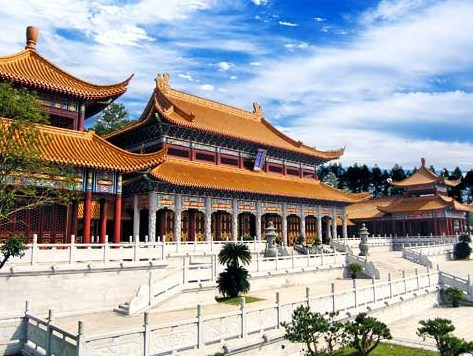
Situated on Luyuan Slope west of Yanling County, it is a national AAAA scenic area. Among the tourist attractions in the scenic area, the most important one is Emperor Yan\\\'s Mausoleum which is a State Preservation Unit of Key Historical Relics and a national AAAA tourist zone. The mausoleum was built in 967 AD during the North Song Dynasty to commemorate Emperor Yan, one of the earliest ancestors of the Chinese people. In 2005 it was listed in the Top Ten Cultural Relics of Hunan Province. Other attractions include Emperor Yan Temple,Chongde Memorial Archway, Luyuan Pavilion, Saint Fire Terrace and Luyuan Cave. Over the past hundreds of years, sacrificial ceremonies have been held in front of Emperor Yan\\\'s Mausoleum. Now it is a sacred place for all the descendants of Emperor Yan and Huang in the world to seek their roots and pay homage to their earliest ancestors. Transport: Buses go from Yanling County to Emperor Yan\\\'s MausoleumTel: (86)731-26100857Admission (for reference): RMB 45yuan /adult Opening hours: 08:00-17:30
HOT Changsha & Zhuzhou & Xiangtan
2021-08-28 17:01
View:4702
-
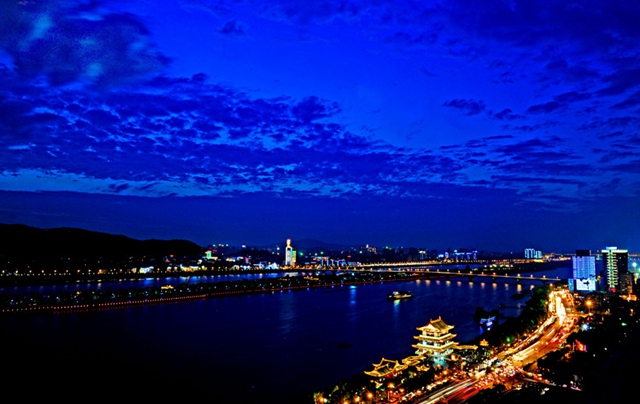
Time-honored academy, ancient relics, spicy food, vibrant bars, popular TV shows and colorful fireworks just make the city a must for visitors.Changsha, the “Star City”, is the capital of Hunan Province. Situated in the lower Xiangjiang River Valley and nestled against Yuelu Mountain, it has a recorded history of nearly 3,000 years.A venerable history and ancient culture are the city’s most distinguishing features.Fantastic antiquities include the well-preserved mummy of a Western Han Dynasty woman excavated from the Mawangdui tombs, and is a historical wonder well worth viewing.Thousands of relics have been unearthed including silk products, paintings, lacquerware, pottery and bamboo writing slips, weapons, and herbs. All will be exhibited in the Hunan Provincial Museum. Presently [April 2015] closed for renovation it will towards the end of 2015. Located at 50 DongFeng Road Changsha it is adjacent to Hunan Martyr’s park.Yuelu Academy, located at the foot of scenic Yuelu Mountain, symbolizes Hunanese education. A number of historically important figures and culturally important relics originated in Changsha, making it one of one of the China’s premier historical and cultural cities. These sites are the settings for the old stories of a great number of celebrities, including Qu Yuan, Jia Yi, Mao Zedong and Liu Shaoqi.Delicious Hunan Cai will never disappoint you.Xiang Cuisine--one of the China’s Eight Cuisines- is fine and delicate in appearance with piquant spicy and sour tastes. Muscular and peppery it is a fiery equal to Sichuan Cuisine. Regardless of snack featured– Huogongdian’s (Fire Palace), ‘Stinky Tofu’ or ‘Sisters Rice Balls’ or Nanmenkou’s spicy shrimp, the savory local foods will not disappoint.Folk performances and modern entertainment combine to present a blend of the traditional and the modern.Changshaians are renowned for their acting and have created various traditional folk forms, including local operas, storytelling, drum opera, acrobatics, and other dramatic styles. Hospitality and enthusiasm flow from vigorous dance performances. KTV squares, disco parlors, clubs, and dancing squares illuminate the city at night. Dotted with all sorts of bars and pubs, Jiefang Xilu, though not as vast as Sanlitun Pub Street in Beijing, has its own style, in which there are romantic quiet bars, dynamic show bars, teahouses and western style restaurants.
Changsha & Zhuzhou & Xiangtan
2017-09-22 17:15
View:4931
-
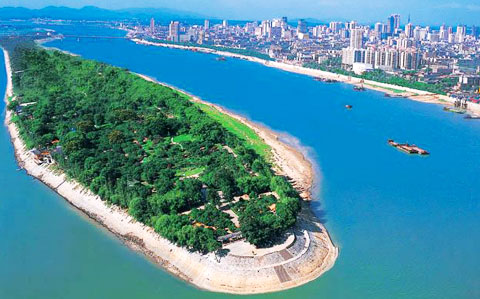
Watched from the Peak of Mount Yuelu, Orange Isle is like a black silk ribbon lying in the middle of the river and like a dark yellowish green barrier while seen in the river bank.As the world\'s longest inland river isle, Orange Isle connects the Mount Yuelu in the west and the downtown in the east, with a length of 5km and a width of 50-200 meters and a total area of 70kms. Orange Isle comprises three nearly-connected isles: upper isle, middle isle and lower isle. The upper isle is called Ox-head Isle and middle isle Land-and-water Isle, while the lower isle is called Fujia Isle. Orange Isle referred to at present includes Ox-head Isle and Land-and-water Isle.The isle has been a popular site for summer vacation for a long time. During his youth, Mao Zedong spent a lot of time walking on the beach, swimming and sunbathing. There is also a grand white marble monument, on which there are two seal cuttings: four Chinese characters Ju Zi Zhou Tou (Orange Isle) and a classical Chinese poem QinYuan Chun-Changsha, both of which are Mao Zedong\'s works.Orange Isle Park was originally set up in 1960 for entertainment and service and today the island is under construction to be a more attractive sightseeing destination, which will integrate gardening, traveling, entertainment, sports, culture and commerce. In the plan, the area will be divided into Two Corridors and Seven Garden: Hunan Culture Corridor, On-water Amusement Corridor, Orange Garden, Garden of the Nature, Park of Harmonious Guests, Plaza of Shopping and Foods, GYM Center, Relaxation Resort and Wildlife Park. And an even more beautiful Orange Isle will surely bring more pleasure to every tourist.Transport: Bus Nos.18 and 317 in ChangshaTel: (86)731-88825011Source: Hunan Official Web Portal
Changsha & Zhuzhou & Xiangtan
2017-05-22 17:20
View:5999
-
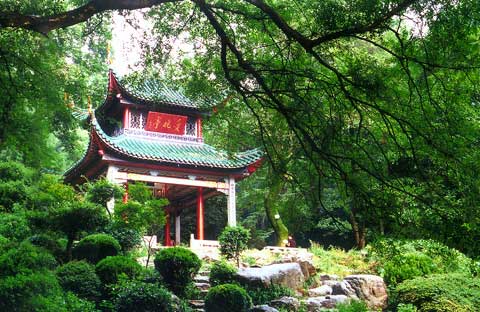
The name Mount Yuelu is related to a famous line from the book\" Story of Nanyue\" written by Liu Song of the Southern and Northern Dynasties (420AD-589AD). The line reads eight hundred square meters around Nanyue, the head is Huiyan and the foot is Yuelu. And the mountain was ever since called Mount Yuelu. As an extended part of the mysterious Mount Hengshan range, Mount Yuelu covers a total area of 8 square kilometers with its highest peak 297 meters above sea level. There are also many peaks with exuberant trees and reclusive and precipitous mountain streams.Except for the beautiful natural sceneries, Mount Yuelu is also dotted with lots of famous places and ancient relics since Western Han Dynasty(206BC-25AD), such as Aiwan Pavilion, Lushan Temple, Wangxiang Pavilion, Lushan Temple Stele of Liyong (678AD-747AD) in Tang Dynasty, and the Monument to Emperor Yu carved in Song Dynasty, etc. Among the evergreen pines and cypresses also lie Huangxing\'s Tomb which is under state protection, and the Tombs of Cai E and Chen Tianhua, who were both outstanding revolutionists.Aiwan PavilionAs one of the four well-known pavilions in China, Aiwan pavilion is a pavilion of ancient style built in the Qing Dynasty. It is square in form with gilt columns and painted red inside. There are four external beams made with complete stripes of granite. It is constructed with double eaves on top with four slopes. And a spiking treasure bottle is fitted atop. Its four corners stretch away upward, covered with greenish glazed tiles.The original name of Aiwan Pavilion was Hongye Pavilion and the present name is derived from the poem Strolling in the Mountain written by Du Mu (a poet of Tang Dynasty).Aiwan Pavilion is not only a famous scenic spot, but also an important site of treasured memories of the revolutionaries like Mao Zedong, Cai Hesen, and Luo Xuezan.Lushan TempleThe Lushan Temple, also known as Luyuan or Huiguang Temple, built by the monk master Fachong of Zan religion during the Jin Dynasty (265AD-420AD), has a long history of more than 1700 years. The temple was first built in the second year of Renshou during the reign of Emperor Wen of the Sui Dynasty (581AD-618AD) as he gave an imperial edict that a pagoda for Buddhist relics be built. During the 18th year of Kaiyuan under the reign of Emperor Tang Xuanzong, the well-known writer and calligrapher Li Yong wrote \"Lushan Temple\" for the stele, known as San Jue Bei, a stele perfect in such three aspects as literary talent, calligraphy and engraving.Originally, it had a main hall and a rear hall, however, nowadays only the rear hall remains there. The arch gate of the temple is built in the local architectural style and upon it there is a sign bearing the legend \"Ancient Lushan Temple\".It is roofed with yellowish tiles and supported by red columns.The Lushan Temple Stele, a black stone with a round top, is a well-known stele of ancient China. Four Chinese characters of \"Lu Shan Si Bei\"(Lushan Temple Stele) were inscribed on it and the inscription on it contains 1419 Chinese characters which recorded the origins and the development of Buddhist doctrine preaching activities through the period between the establishment of the temple in the Jin Dynasty (265AD-420AD) and the setup of the stele in the Tang Dynasty (618AD-907AD).Transport: Bus Nos. 202, 913, 902, 305, Lishan special line, Tour line 1st. It takes just about 30 minutes ride to the railway station, and one hour to the airportAdmission (for reference): Free of charge nowTel:(86)731-88822316Opening hour: 7:30-18:00 (May 1st-October 31st)8:00-17:30(November 1st-April 30th)Information updated on January 8, 2012: Yuelu Mountain & Orange Isle Scenic Area was successfully upgraded to the sixth national 5A-class scenic area in Hunan Province.In recent years, the CPC Changsha Municipal Committee and the Changsha Municipal People\'s Government have made great efforts in the renovation and environmental treatment of the scenic spot, investing 1.67 billion yuan in upgrading the Orange Isle Scenic Spot and 2.25 billion yuan in Tianma Mountain Scenic Spot for ecological restoration and environmental treatment. Due to the remarkable development and environmental improvement recently, it was successfully upgraded to a national 5A-class tourism area, taking Yuelu Mountain, Orange Isle, Yuelu Academy and Xinmin Institute as a whole. The plate will be conferred at a later date.Source: Hunan Official Web Portal�
Changsha & Zhuzhou & Xiangtan
2017-05-22 17:16
View:6955












